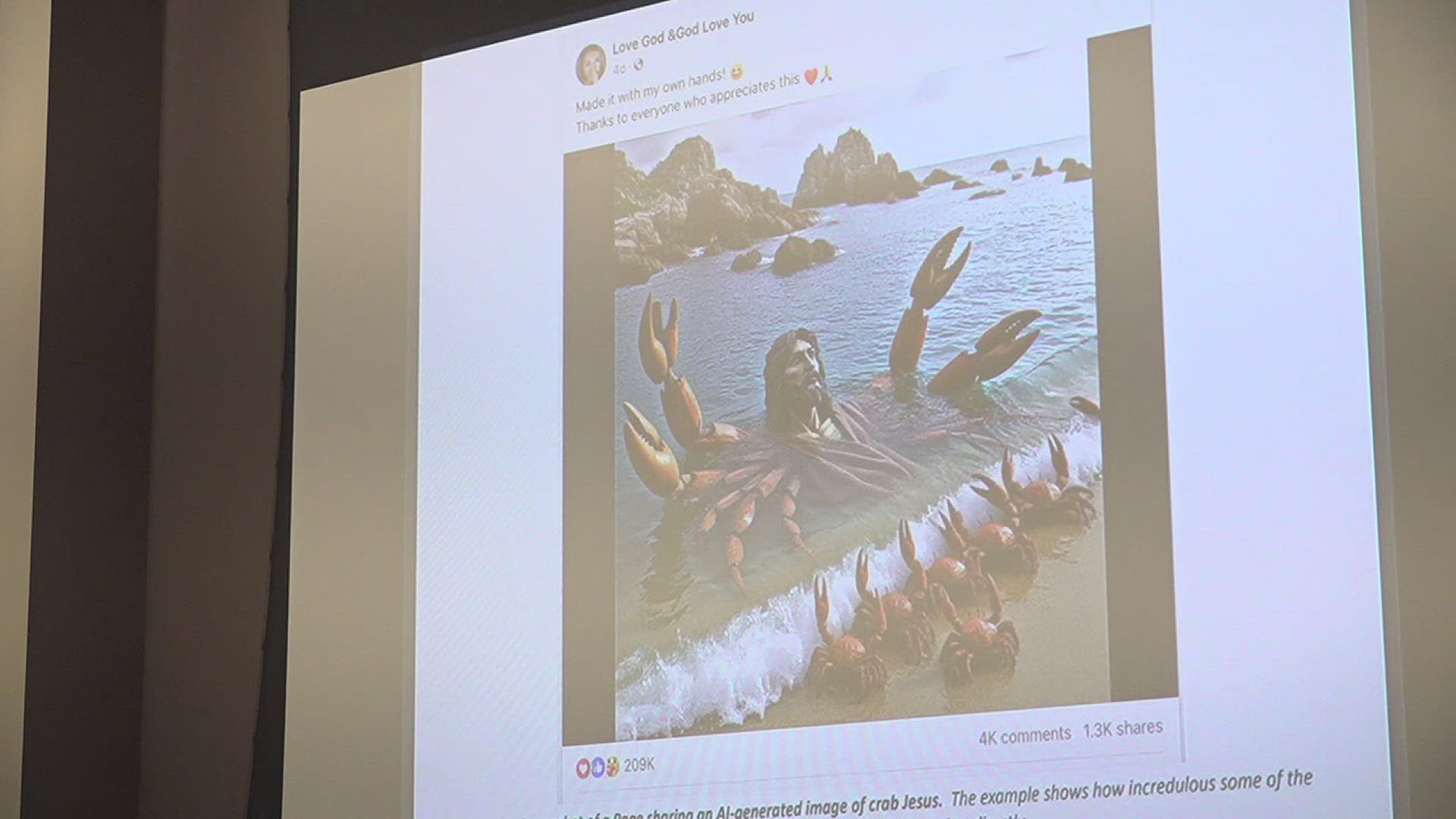MOLINE, Ill. — Cyber security experts are sharing concerns about the nearly half a million deep-fake videos posted last year, according to a detection service. Experts say they can spread disinformation, making it important to verify what you see online.
On Tuesday, Sept. 3, about two dozen people turned out in Moline to learn how to combat disinformation, including deep fakes, and text and image generation.
It was part of a talk by Atticus Garrison, a reference and instruction librarian at Black Hawk College, at the Moline Public Library.
Since ChatGPT was released in winter 2022, artificial intelligence has spread like wildfire. With it, anyone can make text, images or videos of anything.
That's why East Moline resident David Sheil came to the lecture.
"You know, I just see it coming up all over everywhere, the discussion is that it’s just kind of exploding," Sheil said.
News 8 quizzed Sheil on a set of images to see if he could find the fake. He picked out the fake car accident and fake headshot, but he said it was partially guesswork.
"I mean they all look real, they all look like they could be legitimate horrific accidents," Sheil said.
Here are the images he was quizzed on. You can find out which is AI at the bottom of the article.
Real vs. AI Images
But AI images can be malicious, especially in politics, with the presidential election is just two months away.
"We've already seen a few candidates and politically-adjacent people use AI to make political messaging," Garrison said.
Image-generating AI is getting better all the time, but there are a few ways to tell what's real from what's fake.
Garrison said hands can be a big tell. AI has a hard time making five-fingered hands, often adding extra appendages. Generated images can also look too perfect.
"After you’ve seen a few AI images, you start to pick up on...not perfection, but it almost like it was not made by human hands if it’s art," Garrison said. "Or if it’s trying to look like a photograph, there’s a certain airbrushed quality to it."
When it comes to information, don't trust everything you read on social media.
"Just keep relying on the sources you always relied on. Make sure you're double checking against other news stories that are out there," Garrison said.
He also said text-generating AI will often give incorrect information, or make things up, in its responses. That's because it has no way to know the difference between what's true and what isn't.
Here are the answers to the above AI quiz:
- In the first image, the middle headshot is fake. While the headshot on the left has been retouched, the middle headshot is artificially smooth.
- In the second image, the middle car accident is fake. There appears to be a grill in the trunk of the car, along with other inconsistencies in the car's anatomy.
- Of the two pairs of weather shots, the second pair is fake. AI has trouble with lots of parallel lines, such as in the stilts on the house or the gutters on the porch. There's also an unnatural smoothness over each picture. The first two pictures were sent in by Michelle Baker and Kelli Hill at the end of July.









